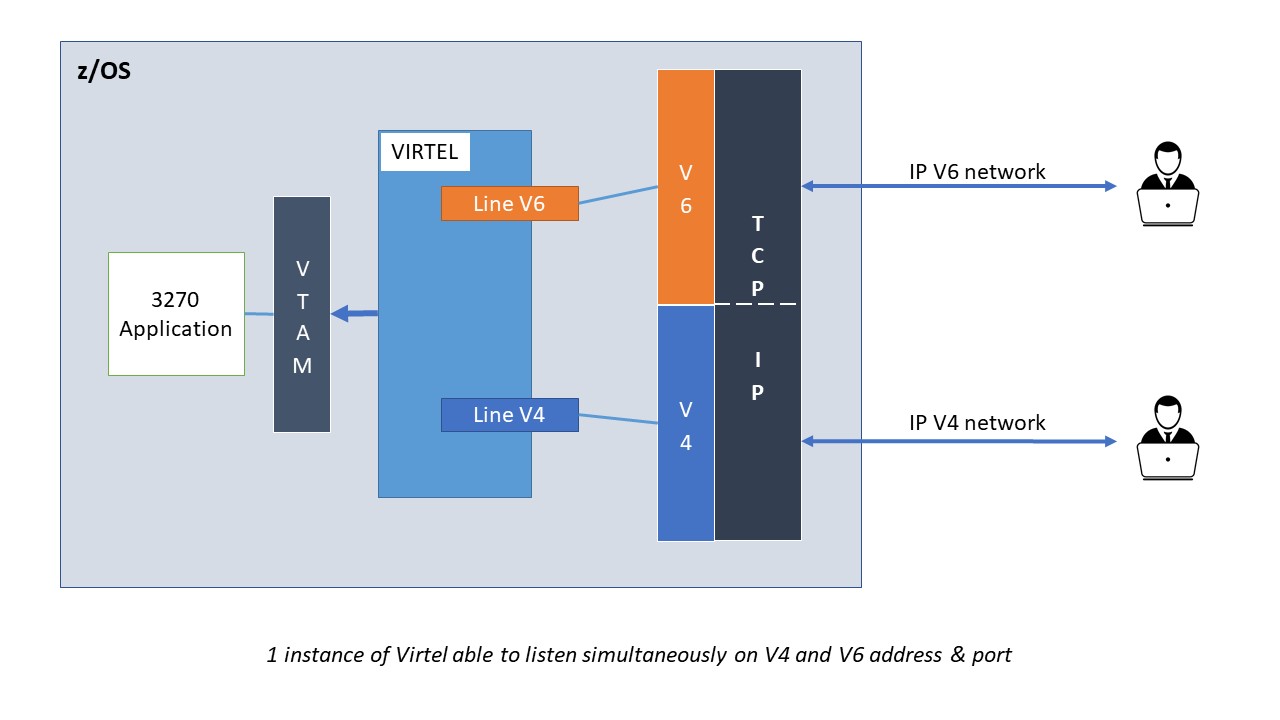Posted by Sebastian DEWAR
July 27, 2021
Is the transition to IPv6 necessary for the mainframe?

Set to replace IPv4 and developed since 1998, the deployment of the IPv6 next-generation protocol has taken ages to take off, although heavily pushed at events such as the World IPv6 Launch in 2012.
The initial 4.3 billion IPv4 addresses that were available worldwide are close to running out. This is mostly due to the increasing number of connected devices (IoT), and it’s only about to get worse with the deployment of 5G.
IPv6 would not only solve this crisis but also offer many more advantages such as limiting man-in-the-middle attacks.
Unfortunately, many countries still struggle to switch to the new internet protocol.
What is the state of IPv6 deployment across the world today?
According to Google, only around 30% of their global users have access to IPv6. The differences are even clearer when you look at countries individually.
For instance, countries such as the USA, Germany, and India are showing a respectable average of 50% adoption, while countries such as China and Russia are still well below 10%.
Why aren’t companies switching to IPv6 faster?
Although reasons vary from company to company, IPv6 adoption is hindered by two main reasons.
Firstly, each company relies mainly on private networks and can freely use the 17 million IPv4 addresses reserved for this purpose. It is therefore quite rare for one company to use them all up (depending on their size and activity of course) so there is no real threat of IPv4 address exhaustion.

Second, there is what is commonly known as the “if it’s not broken, don’t fix it” mentality. Many company executives see IPv6 as a technology that doesn’t give them more than what they have today: internet access and network connectivity; only at an increased cost and risk.
Indeed, implementing IPv6 is expensive if you consider training and configuration time. IPv6 is a significant change for most network admins who will struggle to adapt without expensive training. Moreover, in the case of mainframes, there is a configuration needed to make a z/OS system compatible with IPv6 (doable, but complex).
Truth be told there is no urgent and justifiable reason for most companies to switch to IPv6.
When should your mainframe switch to IPv6?
However, there may be cases when switching to IPv6 may be the right choice for a company that still relies on mainframe applications.
For example, some large utility companies have opted for dual stacking because of the growing amount of private IP addresses they had internally (due to their intensive use of IoT). It was a preventive measure to prepare for the eventual exhaustion of private IPv4 addresses.
In other cases, some sectors may have a legal obligation to switch to IPv6 and/or ensure backward compatibility. For instance, the US government issued a mandate for all federal agencies to have at least 20 percent of IP-enabled assets on federal networks using IPv6-only by the end of fiscal 2023, at least 50 percent by 2024, and at least 80 percent by 2025.
Needless to say that legislation across all countries may start to pressure companies to make the switch to IPv6 sooner or later, especially in critical industries such as banking or transport.
That is why we highly recommend every company to start planning out this transition. To help you achieve an IPv6 transition project with your mainframe, Virtel offers IPv6 and IPv4 dual stacking. The implementation is easy if your z/OS has been configured to be IPv6 compatible.
Thanks to Virtel, ensure access to your 3270 applications, whether a user goes through an IPv4 or IPv6 connection.
Topics: Mainframe, TN3270, Network, terminal emulator, Mainframe News




